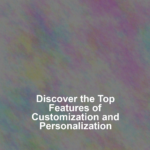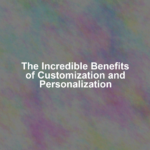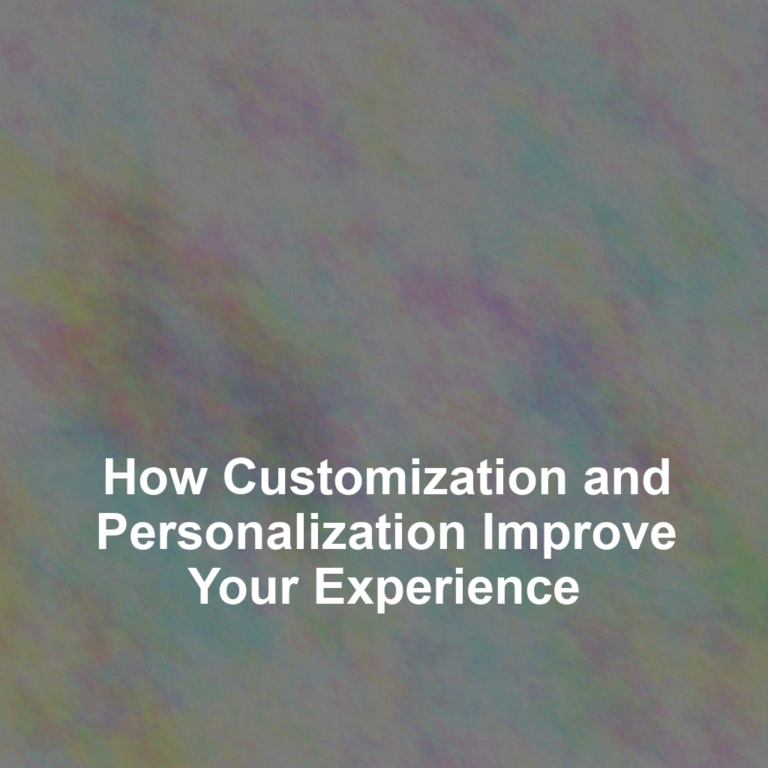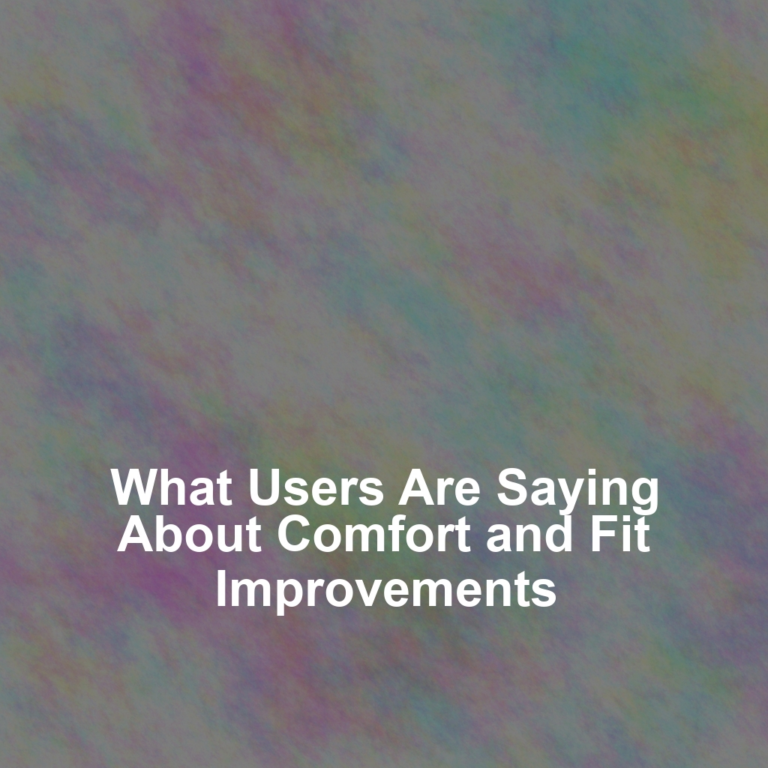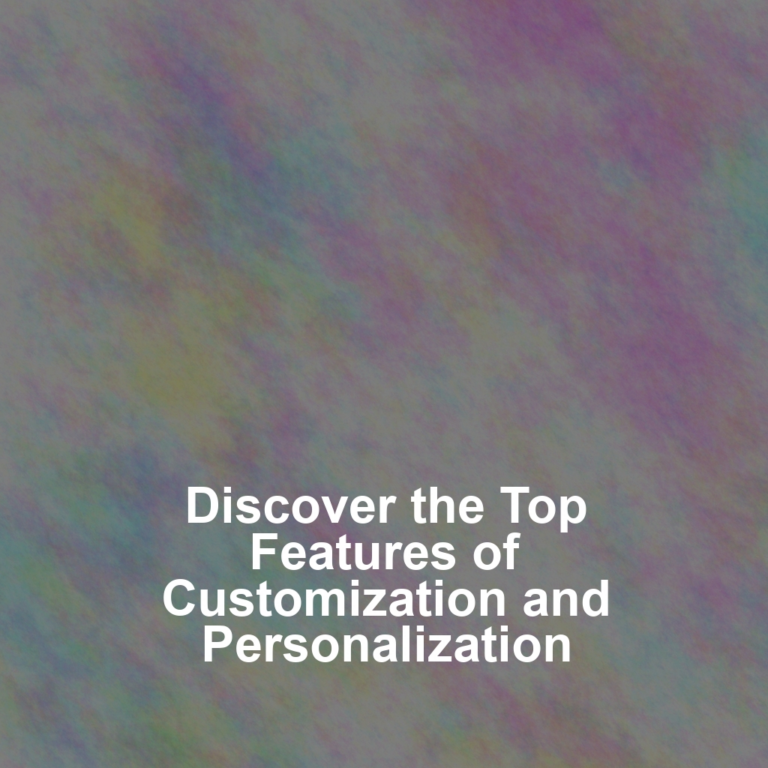Have you ever considered how the tailored experiences offered by customization and personalization affect your choices and satisfaction?
As you navigate through the myriad of products and services available today, youG??re frequently met with the opportunity to shape your experience based on preferences and past behavior. Customization allows you to alter the product or service to fit your specific needs, while personalization involves the entity youG??re interacting with adjusting its offerings to suit you, often through data analysis and predictive algorithms.
The benefits of such tailored experiences are manifold, from enhanced user satisfaction to increased brand loyalty and improved product engagement. However, as youG??ll discover, this tailored world is not without its challenges and ethical dilemmas.
The implications of these practices extend far beyond the surface, affecting not only consumer behavior but also privacy considerations and market dynamics.
Defining Customization and Personalization
Customization and personalization are two distinct processes that empower you to tailor products or experiences to your specific preferences and needs. When you customize something, youG??re making choices from a range of options presented to you. ItG??s like building your dream car by selecting the color, wheels, and interior from a set menu. The manufacturer provides the choices, and youG??re in control of the combination.
On the other hand, personalization is when a product or service is modified based on individual data to fit you better. ItG??s as if your music streaming service learns from your listening habits and starts to recommend songs that match your taste. YouG??re not making the choices actively; the service is adapting to you automatically, using algorithms to predict what you might like.
Both customization and personalization enhance your experience, but in different ways. Customization puts you in the driverG??s seat, while personalization relies on intelligent systems to understand and anticipate your preferences. ItG??s the difference between a bespoke suit tailored to your measurements and a virtual assistant that reminds you of your friendG??s birthday based on past interactions.
Benefits of a Tailored Experience
Tailoring your experience through customization and personalization offers tangible benefits, enhancing satisfaction by ensuring that products and services align closely with your individual preferences. When youG??re able to adjust features to meet your specific needs, youG??re more likely to feel a sense of ownership and connection with the product. This emotional investment can lead to increased loyalty and repeat business for companies that prioritize a tailored experience.
Moreover, personalization can streamline your interactions, saving you time and reducing frustration. Think about a shopping app that remembers your sizes and preferred styles. YouG??ll spend less time searching and more time enjoying products that feel like they were made just for you.
Customization also allows for greater accessibility, ensuring that you can tweak settings to accommodate any personal limitations or requirements. For instance, adjusting text size or color contrasts on a digital platform can make a world of difference if you have visual impairments.
In essence, a tailored experience isnG??t just about the bells and whistles; itG??s about providing you with a seamless, comfortable, and enjoyable journey. Whether itG??s through a gadget that fits perfectly into your lifestyle or a service that seems to read your mind, personalization and customization are the keys to a fulfilling user experience.
Customization in Product Design
In the realm of product design, you have the power to influence the final product to ensure it meets your unique needs and preferences. This is the heart of customization, where products are modified or built from scratch to cater to your specific requirements. Whether itG??s a piece of furniture shaped to fit your living space perfectly, or a computer with components selected to handle your intensive workloads, customization lets you make your mark on the products you use every day.
When you dive into customization, youG??re looking at options that go beyond the standard. YouG??re not just picking a color or adding a monogram; youG??re involved in shaping the functionality, aesthetics, and ergonomics of the product. By doing so, you ensure that what you purchase isnG??t just another item off the shelf, but a reflection of your identity and lifestyle.
Companies are increasingly embracing this trend, using advanced technologies like 3D printing and modular design to offer you unprecedented control over the end product. YouG??ll find that this level of customization not only elevates your experience but also fosters a deeper connection with the items you choose to invest in. So, remember, in product design, itG??s all about making it yours in every possible way.
Personalization in Marketing Strategies
As you navigate the vast sea of marketing strategies, personalization emerges as a beacon, guiding companies to more meaningful engagements with their audience. ItG??s not just about addressing someone by name in an email anymore. TodayG??s personalization digs deeper, leveraging data to tailor experiences to individual preferences, behaviors, and needs.
YouG??re likely aware that personalization can significantly boost conversion rates. But itG??s not just about the numbers; itG??s about fostering a connection that feels genuine. HereG??s how you can integrate personalization into your marketing efforts:
-
Segment Your Audience: Break down your market into smaller groups based on shared characteristics. This allows for targeted messaging that resonates on a more personal level.
-
Leverage Data Analytics: Use customer data to predict future behavior and preferences, crafting marketing messages that are likely to hit the mark.
-
Automate and Scale: Utilize marketing automation tools to deliver personalized content efficiently to large audiences without losing the personal touch.
Challenges and Ethical Considerations
While personalization in marketing can create more engaging experiences, itG??s essential to navigate the potential challenges and ethical considerations that accompany this approach. You must tread carefully; collecting and handling customer data comes with a significant responsibility. Customers trust you with their personal information, and misusing it can quickly erode that trust. ItG??s crucial to be transparent about what data youG??re collecting and how youG??re using it.
Consider data privacy laws such as GDPR or CCPA, which set strict guidelines for data protection. YouG??re not just aiming to comply with these regulations; youG??re also looking to ensure your customers feel their data is safe with you. Furthermore, thereG??s a fine line between personalization and intrusion. You donG??t want your customers to feel spied upon. ThatG??s why you should give them control over their data, allowing them to opt-in or opt-out of personalization features.
Lastly, think about the fairness of your algorithms. Personalization engines can sometimes perpetuate bias, showing users only what they want to see, and potentially limiting exposure to diverse perspectives. ItG??s your job to ensure your personalization strategies are inclusive and unbiased, fostering a positive and respectful environment for all your users.
Conclusion
YouG??ve seen how customization and personalization can transform your experience, from products designed to fit your unique needs to marketing messages that resonate with your personal tastes.
While these tailored experiences offer numerous benefits, itG??s crucial to navigate the challenges and ethical considerations they bring.
Remember, as you embrace these features, itG??s essential to balance personal relevance with privacy and choice, ensuring a future where personal touch doesnG??t overstep personal boundaries.

